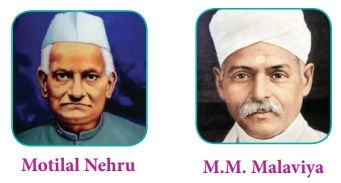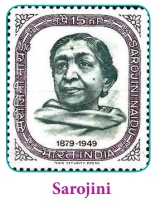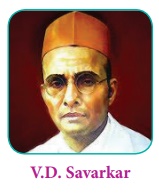Communalism in Nationalist Politics | History - Emergence of the All India Hindu Mahasabha | 12th History : Chapter 6 : Communalism in Nationalist Politics
Chapter: 12th History : Chapter 6 : Communalism in Nationalist Politics
Emergence of the All India Hindu Mahasabha
Emergence of the All India Hindu Mahasabha
In the
wake of the formation of the Muslim League and introduction of the Government
of India Act of 1909, a move to start a Hindu organisation was in the air. In
pursuance of the resolution passed at the fifth Punjab Hindu Conference at
Ambala and the sixth conference at Ferozepur, the first all Indian Conference
of Hindus was convened at Haridwar in 1915. The All India Hindu Mahasabha was
started there with headquarters at Dehra Dun. Provincial Hindu Sabhas were
started subsequently in UP, with headquarters at Allahabad and in Bombay and
Bihar. While the sabhas in Bombay and Bihar were not active, there was little
response in Madras and Bengal.
Predominantly
urban in character, the Mahasabha was concentrated in the larger trading cities
of north India, particularly in Allahabad, Kanpur, Benares, Lucknow and Lahore.
In United Province, Bihar the Mahasabha, to a large extent was the creation of
the educated middle class leaders who were also activists in the Congress. The
Khilafat movement gave some respite to the separatist politics of the
communalists. As a result, between 1920 and 1922, the Mahasabha ceased to
function.
The entry
of ulema into politics led Hindus to
fear a revived and aggressive Islam. Even important Muslim leaders like Ali
brothers had always been Khilafatists first and Congressmen second. The power
of mobilisation on religious grounds demonstrated by the Muslims during the Khilafat
movement motivated the Hindu communalists to imitate them in mobilising the
Hindu masses. Suddhi movement was not a new phenomenon but in the post-Khilafat
period it assumed new importance. In an effort to draw Hindus into the boycott
of the visit of Prince of Wales in 1921, Swami Shradhananda tried to revive the
Mahasabha by organizing cow-protection propaganda.
Before the World War I, Britain had promised to safeguard the
interests of the Caliph as well the Kaaba (the holiest seat of Islam). But after
Turkey’s defeat in the War, they refused to keep their word. The stunned Muslim
community showed its displeasure to the British government by starting the
Khilafat movement to secure the Caliphate in Turkey.
The
bloody Malabar rebellion of 1921, where Muslim peasants were pitted against
both the British rulers and Hindu landlords, gave another reason for the
renewed campaign of the Hindu Mahasabha. Though the outbreak was basically an
agrarian revolt, communal passion ran high in consequence of which Gandhi
himself viewed it as a Hindu-Muslim conflict. Gandhi wanted Muslim leaders to
tender a public apology for the happenings in Malabar.

(a) Communalism in United Provinces (UP)
The
suspension of the non-cooperation movement in 1922 and the abolition of the
Caliphate in 1924 left the Muslims in a state of frustration. In the aftermath
of Non-Co-operation movement, the alliance between the Khilafatists and the
Congress crumbled. There was a fresh spate of communal violence, as Hindus and
Muslims, in the context of self-governing institutions created under the Act of
1919, began to stake their political claims and in the process vied with each
other to acquire power and position. Of 968 delegates attending the sixth
annual conference of the Hindu Mahasabha in Varanasi in August 1923, 56.7 came
from the U.P. The United Provinces (UP), the Punjab, Delhi and Bihar together
contributed 86.8 % of the delegates. Madras, Bombay and Bengal combined sent
only 6.6% of the delegates. 1920s was a trying period for the Congress. This
time the communal tension in the United Province was not only due to the zeal
of Hindu and Muslim religious leaders, but was fuelled by the political
rivalries of the Swarajists and Liberals.

In
Allahabad, Motilal Nehru and Madan Mohan Malaviya confronted each other. When
Nehru’s faction emerged victorious in the municipal elections of 1923,
Malaviya’s faction began to exploit religious passions. The District Magistrate
Crosthwaite who conducted the investigation reported: ‘The Malavia family have
deliberately stirred up the Hindus and this has reacted on the Muslims.’
(b) The Hindu Mahasabha
In the
Punjab communalism as a powerful movement had set in completely. In 1924 Lala
Lajpat Rai openly advocated the partition of the Punjab into Hindu and Muslim
Provinces. The Hindu Mahasabha, represented the forces of Hindu revivalism in
the political domain, raised the slogan of ‘Akhand Hindustan’ against the
Muslim League’s demand of separate electorates for Muslims. Ever since its
inception, the Mahasabha’s role in the freedom struggle has been rather
controversial. While not supportive of British rule, the Mahasabha did not
offer its full support to the nationalist movement either.
Since the
Indian National Congress had to mobilize the support of all classes and
communities against foreign domination, the leaders of different communities
could not press for principle of secularism firmly for the fear of losing the
support of religious-minded groups. The Congress under the leadership of Gandhi
held a number of unity conferences during this period, but to no avail.
(c) Delhi Conference of Muslims and their Proposals
One great
outcome of the efforts at unity, however, was an offer by the Conference of
Muslims, which met at Delhi on March 20, 1927 to give up separate electorates
if four proposals were accepted. 1. the separation of Sind from Bombay 2.
Reforms for the Frontier and Baluchistan 3. Representation by population in the
Punjab and Bengal and 4. Thirty-three per cent seats for the Muslims in the
Central Legislature.
Motilal
Nehru and S. Srinvasan persuaded the All India Congress Committee to accept the
Delhi proposals formulated by the Conference of the Muslims. But communalism
had struck such deep roots that the initiative fell through. Gandhi commented
that the Hindu-Muslim issue had passed out of human hands. Instead of seizing
the opportunity to resolve the tangle, the Congress chose to drag its feet by
appointing two committees, one to find out whether it was financially feasible
to separate Sind from Bombay and the other to examine proportional
representation as a means of safeguarding Muslim majorities. Jinnah who had taken
the initiative to narrow down the breach between the two, and had been hailed
the ambassador of Hindu-Muslim unity by Sarojini, felt let down as the Hindu
Mahasabha members present at the All Parties Convention held in Calcutta in
1928 rejected all amendments and destroyed any possibility of unity.
Thereafter, most of the Muslims were convinced that they would get a better
deal from Government rather than from the Congress.
Expressing anguish over the development of sectarian
nationalism, Gandhi wrote, ‘There are as many religions as there are
individuals, but those who are conscious of the spirit of the nationality do
not interfere with one another’s religion. If Hindus believe that India should
be peopled only by Hindus, they are living in a dream land. The Hindus, the
Sikhs, the Muhammedans, the Parsis and the Christians who have made their
country are fellow countrymen and they will have to live in unity if only for
their interest. In no part of the world are one nationality and one religion
synonymous terms nor has it ever been so in India.’

(d) Communal Award and its Aftermath
The
British Government was consistent in promoting communalism. Even the delegates
for the second Round Table Conference were chosen on the basis of their
communal bearings. After the failure of the Round Table Conferences, the British
Prime Minister Ramsay MacDonald announced the Communal Award which further
vitiated the political climate.

The
Rashtriya Swayamsevak Sangh (R.S.S.) founded in 1925 was expanding and its
volunteers had shot upto 1,00,000. K.B. Hedgewar, V.D. Savarkar and M.S.
Golwalker were Hindu Rashtra and openly advocated that ‘the non-Hindu people in
Hindustan must adopt the Hindu culture and language... they must cease to be
foreigners or may stay in the country wholly subordinated to the Hindu Nation
claiming nothing.' V.D. Savarkar asserted that ‘We Hindus are a Nation by
ourselves’. Though the Congress had forbidden its members from joining the
Mahasabha or the R.S.S. as early as 1934, it was only in December 1938 that the
Congress Working Committee declared Mahasabha membership to be a
disqualification for remaining in the Congress.
Related Topics